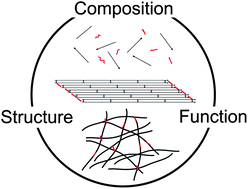Collagen I is one of the most abundant molecules in vertebrates constituting major parts of the fibrillar extracellular matrix (ECM), thus providing structural integrity and mechanical resilience. It has therefore become an almost ubiquitous biomolecule to use in contemporary biomimetic cell culture scaffolds and in tissue engineering scenarios where new functions for biomedical applications are sought. As collagen I easily self-assembles into fibrillar structures, a number of approaches aim to integrate new functionalities by varying the compositional complexity of the developed scaffolds. Such composite matrices make use of the abundant knowledge about the fibrillar collagen I structure and its binding sites for other ECM molecules. This review gives an overview of the reconstitution of collagen I scaffolds by the implementation of other organic biomolecules. We focus on the self-assembly and structure of the collagen I fibrils affected by the interaction with cofactors and comment on mechanics and biomedical use of such composite scaffolds.
